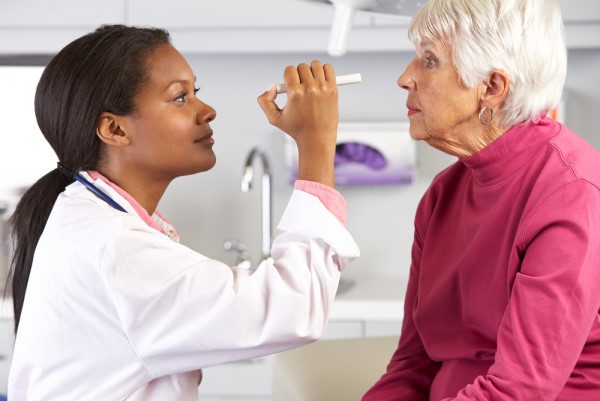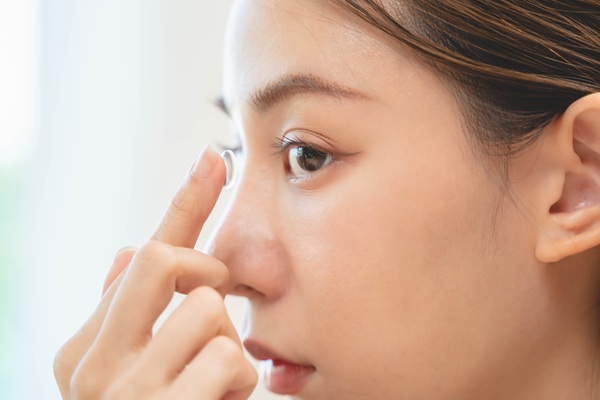Common Types of Vision Tests

It is common for adults to avoid going for regular eye exams because they do not think they need them. However, vision tests are essential to keeping your eyes healthy and diagnosing and treating conditions that can result in blindness, such as glaucoma and cataracts. In addition, these tests help keep your eyes healthy and functioning over time. Learn more below about each type of vision test and how they are vital to understanding changes in your vision and eye health.
What is a vision test?
A vision test is a way that an optometrist looks at a patient's eyes and ensures they are healthy and functioning. These tests will typically place during a routine eye exam or a comprehensive eye exam. The frequency of an exam depends on the patient's vision and general health, whether they wear corrective lenses or have medical conditions that may affect their vision. For instance, someone with prescription eyeglasses will need to go for a comprehensive eye exam every year or two to maintain their eye health, monitor for vision changes, and receive a new lens prescription from their optometrist.
Common types of vision tests
An optometrist will do a series of vision tests during an eye exam. Each test evaluates different elements of vision and eye health. Continue reading to learn more about the most common types of vision tests and why they are essential to a comprehensive eye exam.
Color blind test
This vision test screens for partial or total color blindness. It examines the patient's ability to distinguish different colors. For example, the optometrist may ask them to notice a figure or letter in an image of multi-colored circles.
Corneal topography
While an individual stares at an object, the eye doctor will take thousands of pictures of their eyes to shape the map of their cornea. It can help the eye doctor see if the patient has a curved cornea (astigmatism). This test can also help the eye doctor create contact lenses that fit the patient's eye or prepare them for operations, such as corneal transplant surgery.
Intraocular pressure measurement
An intraocular pressure measurement evaluates the amount of pressure in a person's eye. This pressure is known as intraocular pressure. The test helps the optometrist detect if the patient has glaucoma, an eye disease that causes pressure to build up inside the eyes. It can lead to blindness if not caught and treated early.
A non-contact tonometry test is today's most common way to determine eye pressure. Using a tonometer, the optometrist can measure pressure by blowing air directly into the patient's eye. In addition, the pachymetry test, another common glaucoma test, measures the thickness of the cornea, which is critical for assessing intraocular pressure.
Peripheral visual field test
This test evaluates the patient's peripheral vision. Three main types of visual field tests help determine the size of the patient's visual field and the gaps that need to be addressed. They include the following:
- Automated perimetry. The patient looks into a special machine and focuses on a spot in the center of the visual field. They will then press a button whenever a light flashes in their peripheral vision.
- Tangent screen exam. Like automated perimetry, the patient will look at a target in the center of a screen. The optometrist will move objects in and out of their peripheral vision. The patient indicates when they see the objects and again when they disappear.
- Confrontation visual field exam. The optometrist sits in front of the patient and moves their hand in and out of the patient's peripheral vision. They will then say when they see the hand and how many fingers the optometrist holds up.
Refraction test
Refraction is how light waves bend as they pass through an individual's cornea and lens. The optometrist may use a phoropter, which evaluates refractive error, in a dark room to give the patient a better view of the images through the phoropter lens. This test helps determine if the patient needs vision correction through a corrective lens prescription.
Retinoscopy
A retinoscopy is where a patient stares at a large object through a phoropter. The optometrist will shine a light in their eyes and flip through several different lenses. This vision test may help determine if the patient needs corrective lenses or other vision correction.
Visual acuity test
A visual acuity test, also known as the "eye chart," is where the patient stands about 20 feet from a chart and reads the chart with one eye covered. This chart, the Snellen Eye Chart, has a series of letters printed on it. As the patient moves further down the chart, the letters will gradually get smaller. After finishing the first eye, they will repeat the test with the previously covered eye. The results help the optometrist determine how each eye's vision level compares to the normal 20/20 vision.
Schedule an appointment today
Vision tests during a routine eye exam can help maintain your vision and eye health. They often serve as the first line of defense in catching and treating eye diseases or medical conditions that cause vision problems. If you have questions about the vision tests we perform at our office, call our office to learn more or to schedule an appointment with our experienced optometrist. Take care of your vision today.
To learn more about our eye care services, call {{PHONE}} for our Dallas office or visit https://www.texasoptical.net to schedule a consultation.
Check out what others are saying about our services on Yelp: Read our Yelp reviews.
Recent Posts
For those living with diabetes, undergoing a diabetic eye exam is one of the most important steps in protecting their vision and overall eye health. High blood sugar levels can lead to a range of complications, including conditions that damage the eyes over time. These exams help detect these issues before they become serious, allowing…
Contact lenses provide clear vision and convenience for individuals who prefer an alternative to eyeglasses. However, proper care and maintenance are essential to prevent infections, irritation, and eye damage. Neglecting hygiene practices can lead to serious eye conditions, including corneal ulcers and keratitis. Understanding how to clean, store, and handle contact lenses ensures long-term eye…
Maintaining eye health and preventing long-term issues is the result of consistent and quality vision care. Many people focus on overall wellness but may overlook daily habits that support healthy eyesight. However, taking simple steps each day can protect vision, reduce eye strain, and prevent future complications. By making eye health a priority, it is…
Prescription contacts provide vision correction, comfort, and convenience for those who do not want to wear glasses. However, caring for and wearing contacts takes some getting used to. Learning to insert, remove, and maintain them will help ensure a comfortable and safe experience.Not all contact lenses are the same, and choosing the right pair is…


